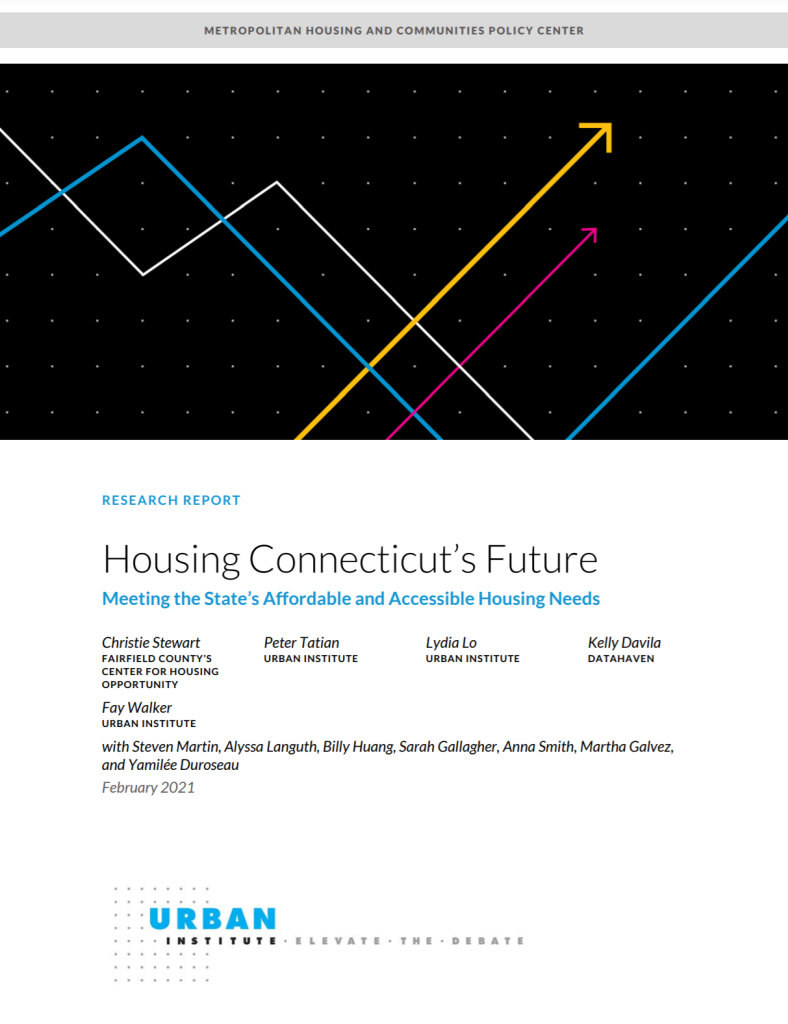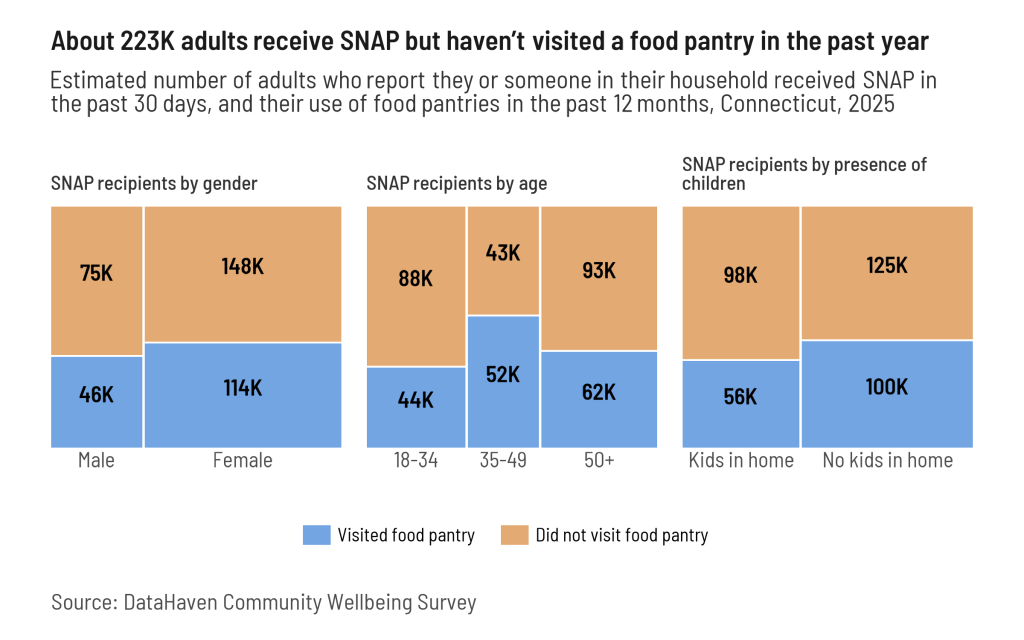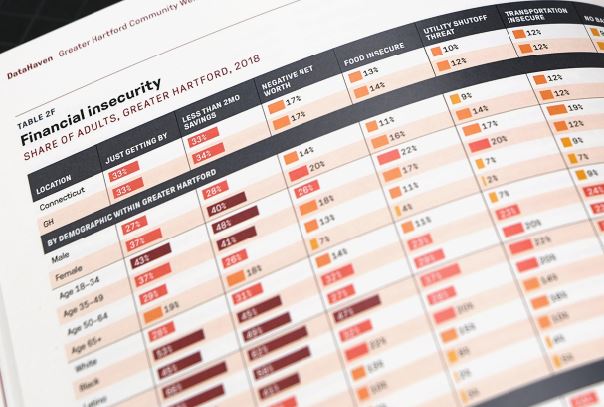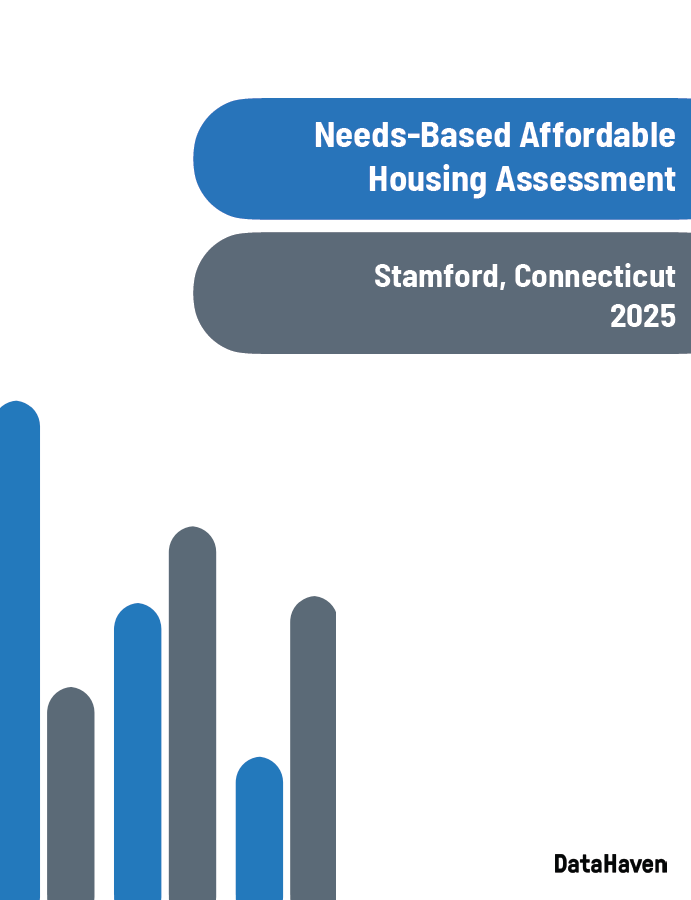Housing Connecticut’s Future: Meeting the State’s Affordable and Accessible Housing Needs
A comprehensive look at affordable and accessible housing needs in the state

This report was the collective effort of a study team formed from seven different organizations: The Urban Institute, DataHaven, Source Development Hub, Corporation for Supportive Housing, Supportive Housing Works, and Fairfield County’s Center for Housing Opportunity. It was authored by Christie Stewart (FCCHO), Peter A. Tatian (Urban), Lydia Lo (Urban), Kelly Davila (DataHaven), and Fay Walker (Urban) and released on February 4, 2021. The following text is from the Urban Institute report webpage:
The Connecticut Department of Housing, in conjunction with the Department of Social Services, commissioned this study, the first comprehensive look at affordable and accessible housing needs in the state, in May 2020. The research team gathered and analyzed data from state, federal, and public sources to describe and project trends in Connecticut’s affordable and accessible housing supply and needs across different population groups.
After growing through most of the past decade, Connecticut’s population is projected to decline over the next two decades, reflecting three demographic trends: relatively more people migrating out of the state, rather than into it; an aging population; and a decline in white population.
As populations change, demand for specific housing unit types will change as well. To create housing that meets affordability needs, Connecticut must address decreased rates of new construction, thousands of units with expiring Section 8 project-based rental assistance, LIHTC, and other forms of assistance, and an 86,000 unit gap in affordable housing needed for very-low income households. Although the total number of very-low income households will decline through 2040, the decrease will not be enough to close the affordability gap.
Lack of standard accessible unit tracking and data makes it difficult to get a clear, comprehensive picture of the accessible housing supply in the state. Based on available data, most privately-produced units meeting the state’s highest accessibility standard, as well as accessible units within federally-assisted housing, tend to be in counties with urban areas. Roughly one third of all low-income households in the state have someone with a disability, indicating a much greater need for housing that is both assisted and accessible. Largely because of an aging population, Connecticut will see an increasing need for housing units that are accessible for people with mobility and sensory disabilities.
To address these challenges, the study team recommends the following actions.
- Committing to data-driven, proactive investment. The state’s current investment process does not ensure the right volume of units at the right cost bands in the right locations. A data-driven, proactive investment and policy approach could target specific populations in each county where the need for housing at designated cost bands and accessibility levels is greatest.
- Regional Planning. Applying a geographic lens to housing investments would help Connecticut balance local needs against a larger, statewide strategy to more equitably and rationally distribute the costs and benefits of economic growth. A regional planning approach would promote patterns of development, both privately and publicly funded, that are sustainable and forward-looking and that leverage other community assets such as schools, transit, and public amenities.
- Prioritization of resources based on need. Connecticut’s targeted plan to address homelessness has earned Connecticut a national reputation as a leader on this issue. Taking a similarly targeted approach to the production, preservation, and protection of affordable and accessible housing for cost burdened residents could transform the state’s ability to make its vision of ensuring housing for everyone a reality.
Related Reports
Related Data
Dataset, Document
DataHaven HR1 Tax Effects Spreadsheet by Connecticut Town
Document
Wilton Town Equity Report 2025
Document
Winchester Town Equity Report 2025
Document
Windham Town Equity Report 2025
Document
Windsor Town Equity Report 2025
Document






